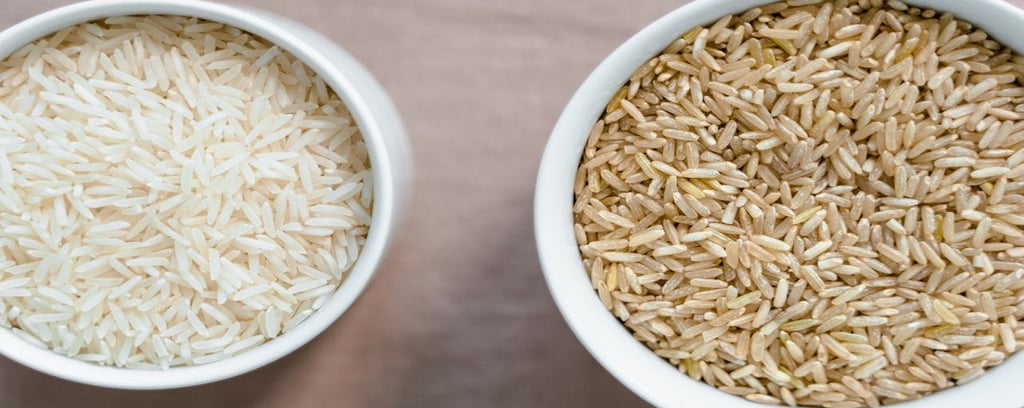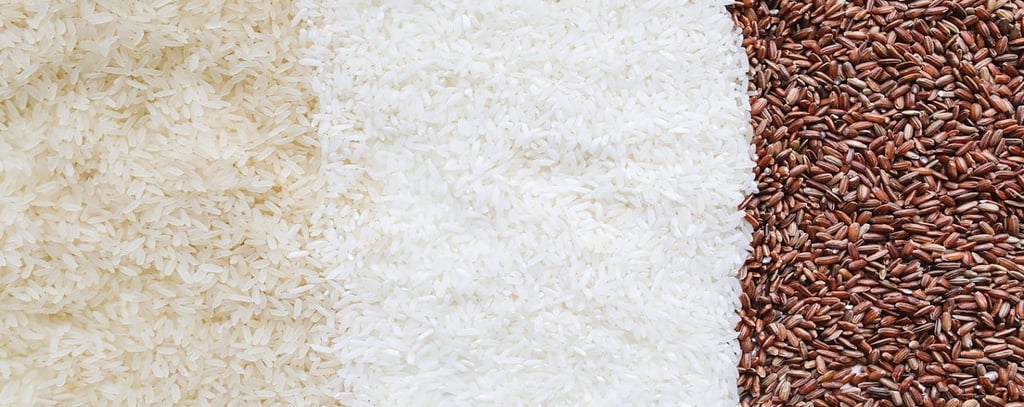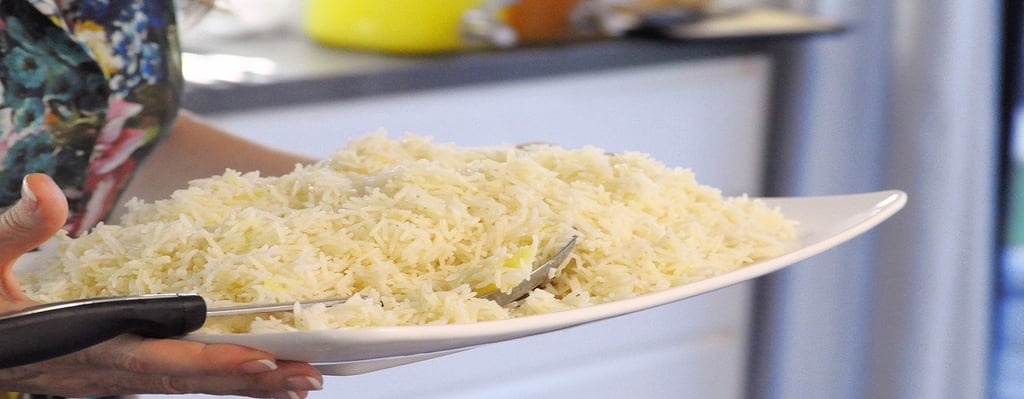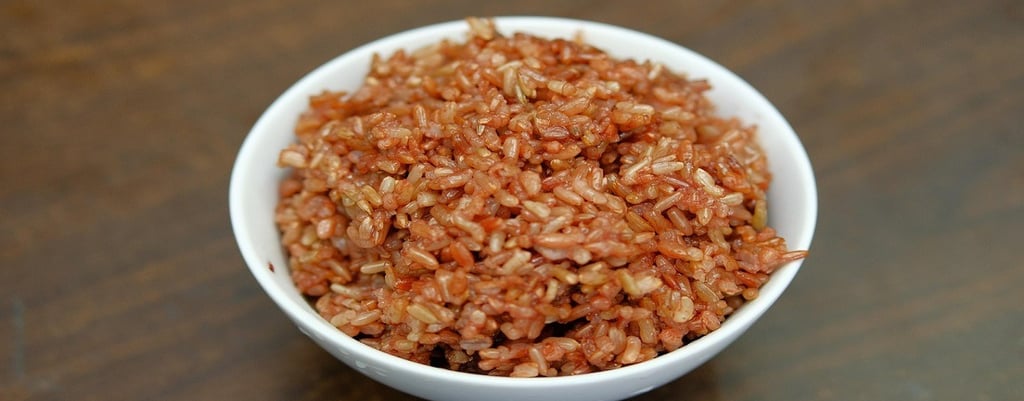Is Brown Rice healthier than White Rice?
Brown rice is generally considered to be more nutritious than white rice. However, white rice also has some health benefits and can be consumed in moderation. Read this blog to learn more!


Rice is a staple food worldwide. There are thousands of varieties of rice grown in different parts of the world. It can be of many colors: white, brown, red, purple, or black. Rice is a rich source of carbohydrates and also contains several other nutrients, varying according to the variety and quality of rice.
Consumption of white rice and its effect on the body have always been debatable; some nutritionists prefer whole grains like brown rice, whole wheat, barley, corn, etc., over white rice, while others suggest it's completely healthy to add white rice to your balanced diet.
In this article, we will thoroughly discuss the differences between white rice and brown rice, their nutritional content, and health effects, and conclude which one is better for consumption.
What is the difference between Brown Rice and White Rice?


To understand the difference between brown rice and white rice, we should first understand the concept of whole grain.
A whole grain is nothing but a complete seed of a plant, which, if sown, can produce a new plant. It consists of three parts: bran, germ, and endosperm.
The Bran is the outer, multilayered, fibrous hard shell of the grain. The main purpose of the bran is to protect the seed from environmental stress.
Below the bran, the endosperm is present. It is the largest portion of the grain. Endosperm is the starchy middle portion that provides essential nutrients to the germ of the grain for the growth of the plant.
The germ (embryo) is the innermost part of the grain at the bottom of the endosperm from where the plant sprouts.
Brown rice is a whole grain that contains all three layers (bran, endosperm, and germ). While in white rice, the bran and germ portion is removed, and only the endosperm of the grain is left.
Nutrition in Brown Rice and White Rice
Nutritionally, brown rice has an edge over white rice due to the presence of all three components of rice: bran, endosperm, and germ.
The bran layer of brown rice is rich in both soluble and insoluble fiber; it also contains several B vitamins, including thiamin (B1), riboflavin (B2), niacin (B3), and vitamin B6, as well as minerals such as magnesium, phosphorus, selenium, and potassium.
The germ of brown rice is rich in protein, Vitamin E, unsaturated fatty acids, and other vitamins and minerals. The endosperm of the rice is mainly starch; it also contains protein and nutrients, but in lesser quantity than the bran and germ.
White rice, on the other hand, has only starchy endosperm. Most of the nutrients and fiber are removed when the bran and germ are removed.
According to the United States Department of Agriculture (USDA), long unenriched brown and white rice contains the following nutrients.
Are there any health benefits of white rice?
White rice is often criticized for its lack of nutrients. However, it has many health benefits and can be beneficial in several ways.
⦁ For Runners and Athletes
Carbohydrates are the energy source of the body. The body converts carbohydrates into glucose to provide energy; excess glucose is stored as glycogen in the liver and muscles. When we perform rigorous exercise, these stored glycogen levels deplete. Carbohydrates help replenish the depleted glycogen.
White rice is an excellent source of carbohydrates. It is an ideal pre- and post-workout meal for long-distance runners, cyclists, and athletes.
⦁ Easy to Digest
White rice is easier to digest than brown rice due to its low fiber content.
The bran and germ portion of the brown rice is comparatively harder to digest than the endosperm. Therefore, white rice doesn't put much pressure on the stomach and is a suitable meal option for individuals with weak digestion or those who have digestive issues, such as irritable bowel syndrome (IBS) or inflammatory bowel disease.
⦁ Lower in Sodium
White rice contains less sodium than brown rice. It is good for individuals who want to limit their sodium intake or are on a low-sodium diet.
⦁ Can be a part of the Balanced Diet
White rice is quite versatile and can be easily added to the diet. You can enjoy white rice paired with lentils, beans, green vegetables, fish, and meat for a balanced diet.
Consuming white rice with protein- and fiber-rich foods helps mitigate the harmful effects of the high glycemic index of white rice, making it a healthier option.
Risks of eating excessive White Rice


White rice is generally lower in nutrients than brown rice and may cause some health issues if consumed in excess.
⦁ Higher risk of Diabetes
White rice has a higher glycemic index of 73, so it increases blood sugar more rapidly than brown rice and raises the risk of type 2 diabetes.
⦁ Arsenic Contamination
Rice grown in certain areas may cause arsenic contamination, which increases the risk of cancer, heart disease, and brain disease. However, brown rice contains more arsenic than white rice due to its accumulation in the outer bran and germ layer of the grain.
Rinse and cook the rice properly to reduce the risk of arsenic intake.
⦁ Can cause Overeating
White rice is low in fiber, so it digests quickly and doesn't keep you full for long. Also, blood sugar spikes and crashes can make you feel hungry soon after eating, so you tend to overeat.
Consume fiber and protein-rich foods with white rice for healthy weight management.
Benefits of Brown Rice over White Rice


Brown rice is a whole grain and offers some health benefits over white rice.
⦁ Nutrient Rich
Brown rice has a bran and germ layer, which adds more fiber and antioxidants to it. It contains a higher amount of nutrients such as Vitamin B complex, magnesium, selenium, phosphorus, and zinc.
⦁ Good for Blood Sugar Management
Brown rice has a glycemic index of 63, which is comparatively lower than that of white rice (65). Therefore, it increases blood sugar more slowly than white rice and is a healthier option.
The good amount of magnesium and fiber in brown rice helps manage blood sugar levels.
⦁ Improves Heart Health
Whole grains such as brown rice are a good source of dietary fiber, which promotes heart health. Brown rice can reduce LDL (bad cholesterol) and increase HDL (good cholesterol).
⦁ More Antioxidants than White Rice
Brown rice has a higher amount of antioxidants than white rice. Antioxidants help fight harmful free radicals in the body.
⦁ Aids Weight Management
Brown rice is slightly lower in calories than white rice. Fiber in brown rice provides satiety, so you feel fuller for longer and tend to eat less during the day.
Brown rice is a good source of manganese. It helps boost metabolism, so you burn more calories even at rest.
Are there any side effects of Brown Rice?
Brown rice contains several nutrients good for health. However, its overconsumption may cause some side effects.
⦁ Digestive Issues
Brown is high in fiber, and an excessive fiber diet can cause gas, bloating, and abdominal pain.
⦁ Higher Arsenic than White Rice
Arsenic is a toxic heavy metal. The bran and germ layer of brown rice contains more arsenic than the endosperm of the grain. So, it has a higher amount of arsenic than white rice. High amounts of arsenic can affect vital organs.
⦁ Antinutrients
Brown rice contains phytic acid, which acts as an anti-nutrient and hinders the absorption of nutrients like iron, zinc, and calcium.
Conclusion
Both brown and white rice have their pros and cons. Although brown rice is a whole grain with more nutrients than white rice, it is heavy on the gut. White rice, on the other hand, is easily digestible and is suitable for individuals with sensitive digestion.
The choice of rice depends on your health goals and physical activity. If you are an athlete, white rice can be a good option to fuel your body with carbohydrates.
For average individuals, brown rice is preferable due to its low glycemic index, vitamins, and minerals.
Whichever rice you choose, consume it with other healthy foods to have a balanced diet. Remember, no food is completely bad; it's all about how we consume it. Moderation is the key; an excess of everything is bad.
